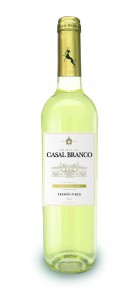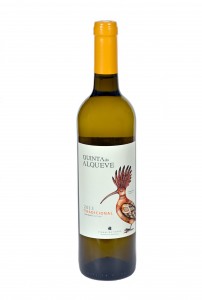Portugal, adjacent to its prominent wine producing neighbor Spain, is often overlooked. This is unfortunate given the fact that Portugal has a centuries old wine making history and produces indigenous as well as international varietals of distinction. It is a surprise that Portugal’s most venerable wine producing region Ribatejo (now Tejo) that is situated along the river of the same name is just beginning to break into The United States market. But better late than never.
The Tejo is distinguished by 3 wine producing regions: the Bairro, the Charneca and the Campo. Each region has a different soil type that, along with the climate, helps to shape the character of its different wines.
If Portugal is known for any particular grape it is undoubtedly the Touriga Nacional. This red grape tends to produce rich, full bodied and ripe as well as complex wines that make a robust impression on the nose and the palate. When it comes to Portuguese white wines Vinho Verde usually comes to mind. Most of the Vinho Verde that comes to The United States is light and crisp with a hint of effervescence. But some feel it lacks complexity. Portugal’s other white wines are often overlooked.
Nevertheless, Portugal makes a variety of white wines ranging from Sauvignon Blanc to those from indigenous grapes like the major Portuguese white grape Fernao Pires. It also produces a number of blends that are light and crisp with fresh citrus fruit aromas and balanced acidity as well as subtle minerality. They can also be lush and ripe with vanilla, honey and grassy as well as herbaceous characteristics.
The Tejo has over 80 vineyards and many of these are family owned. The results are quality and reasonably priced wines with unique character that reflect their terroir, climate and the experience that comes with generations of wine production.
The Campo lies along the banks of the Tejo River. Its moderate climate and moist clay or clay limestone soil tends to create wines that are fruity and balanced with a subtle minerality. The indigenous varietal Fernao Pires tends to thrive in this temperate region.
The Barrio stands above in The North Highlands. Its clay and limestone soils are ideally suited to indigenous varietals like Fernao Pires along with Sauvignon Blanc.
The Charneca to the South of the Tejo river has a warmer climate and sunny or sandy clay soils. The Fernao Pires, Portugal’s premier white grape, also grows here. Portugal’s climate and terroir are ideal for the planting of this indigenous grape and its expression is different depending on the region in which it is produced as well as the methods of production attributed to each vineyard. Many of them incorporate traditional and modern methods of wine producing practices including foot treading or the manual stomping of grapes to crush them.
The 2013 Quinta do  Casal Branco has a fresh white flower nose with citrus and herbaceous notes along with a crisp minerality. This wine works best with raw seafood, blanched lobster with butter and summer fruit salads.
Casal Branco has a fresh white flower nose with citrus and herbaceous notes along with a crisp minerality. This wine works best with raw seafood, blanched lobster with butter and summer fruit salads.
 The 2013 Quinta do Alqueve Tradicional Branco from Pinhal da Torre consisting of 100 percent Fernao Pires and aged in 100 percent stainless steel is defined by a ripe peach and apple nose and notes of lemon zest and orchard fruits with a touch of minerality. This wine pairs well with grilled salmon, roasted vegetables and baked chicken dishes.
The 2013 Quinta do Alqueve Tradicional Branco from Pinhal da Torre consisting of 100 percent Fernao Pires and aged in 100 percent stainless steel is defined by a ripe peach and apple nose and notes of lemon zest and orchard fruits with a touch of minerality. This wine pairs well with grilled salmon, roasted vegetables and baked chicken dishes.
![]() The Tejo also makes sparkling wines and the 2012 Conde de Vimioso Extra Brut comprising a blend of Chardonnay and Touriga Nacional has good effervescence, a floral nose and strawberry as well as subtle brioche notes. This selection goes nicely with clams on the half shell and chilled shrimp.
The Tejo also makes sparkling wines and the 2012 Conde de Vimioso Extra Brut comprising a blend of Chardonnay and Touriga Nacional has good effervescence, a floral nose and strawberry as well as subtle brioche notes. This selection goes nicely with clams on the half shell and chilled shrimp.

Be First to Comment